
Brave the elements, if you dare. Temperatures are about to rise. Fast.
Traveling from Los Angeles to Las Vegas is nothing new or novel. It’s a major route with dozens of flights departing daily from LAX or Bob Hope Airport in Burbank. But why bother with the headache of air travel, despite the swift 50-minute travel time to Sin City, when a brisk drive through the Mojave Desert invites marvelous unexpected elements, both natural and man made, proving that the journey is often more exciting than the destination itself.
But first, make sure to fill up the tank, apply extra sunscreen, and load the car up with water. Make that extra water, as the dry desert heat forces unpredictable levels of dehydration.
Departing downtown Los Angeles before 7:30 A.M. is the recommended start time for this 270-mile jaunt to Vegas. Leaving early, driving past Rancho Cucamonga before 9 in the morning, helps avoid the major traffic along I-10 west, a major commuter route that connects the suburbs of LA to San Bernardino County.
There’s really not much to see for the first 45 miles anyway, but once the road trip hits I-15 north, just outside Ontario, things start to become interesting, and elevated.
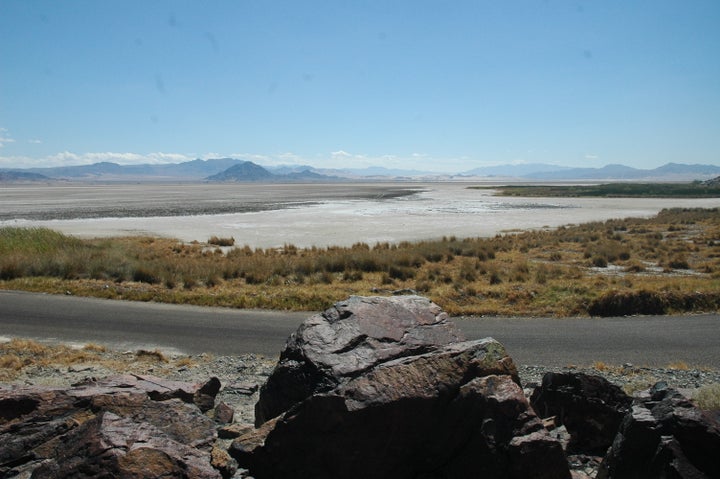
Nearing the Cajon Pass, which cuts between the San Bernardino and San Gabriel Mountains, the drive hits a steep incline, which will require a heavy foot on the gas pedal. A monstrous scenic gem, Cajon is massive, pushing 3,700 feet. But there’s no place or time for sightseeing here; better to drive on, as the region has been hit by intense fires as recently as 2016.
And with Cajon in the rearview, it’s on to the high desert, and a quick drive past towns like Victorville and Hesperia. Again, pass on by until Barstow, and even then, just take a brief moment to stretch, fill up the tank, use the facilities, and pick up some more water.
The extra rations will come in handy …
At this point, it’s time to crank up the volume and cruise to the sounds of renegade and outlaw music. The desert brings out the inner bandolero, and the soundtrack must fit the scenery.
Right around the 87.5 mile marker on I-15, near Yermo, the spirits of the desert begin to show themselves. All denominations are welcome in the Mojave, but the desert heat is the only supreme being along the 100-mile stretch to the Nevada border. Good thing there’s plenty of water in the trunk.
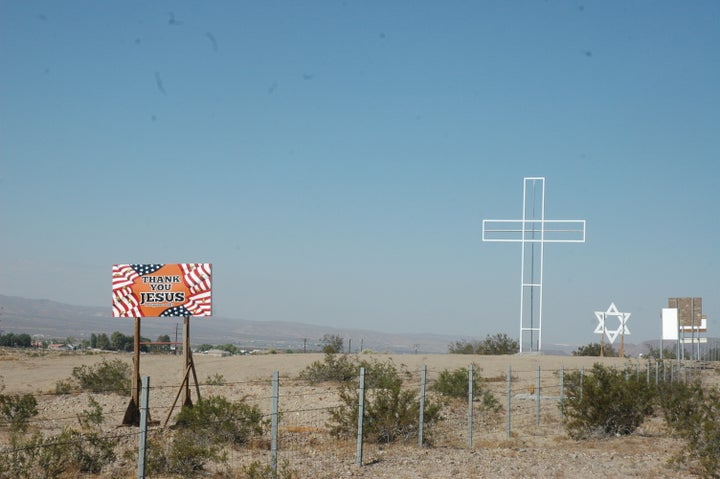
From religious iconography, there’s a sharp transition to ghosts and haunted territory outside of Yermo. Signs reading “Ghost Town Road,” “Ghost Campgrounds,” and “Ghost Tours” line the highway, and the ghosts are real.
Less than 15 miles past Yermo, near Newberry Springs, the ghosts of summer’s past run wild at the Lake Dolores Waterpark. Better known as the Rock-A-Hoola or the Discovery Waterpark, the abandoned infrastructure on the northeast side of the highway can be reached by taking the Harvard Road exit and then circling back south on Hacienda Road.
There’s no way around it. In order to reach Lake Dolores, there’s some requisite trespassing. Fortunately, the GMC Yukon Denali offers the power and traction to scale the short and steep ramp into the sand-filled parking lot. It takes an SUV or all-wheel-drive to make the initial ascent, although the V8 engine handles the incline with ease. Visitors without bigger vehicles can simply leave their cars on the shoulder. But make sure to lock up.
Once inside, graffiti dominates the hollowed out kiosks, where children once played carnival games in the sixties and seventies. Today, birds fly from building to building, past impressive murals and lackadaisical tags. Lake Dolores is a veritable wonderland for street artists looking for space to practice their trade. It also provides a place for young couples to profess undying love with spray paint, not too different than the then-teenage baby boomers did during the park’s heyday.
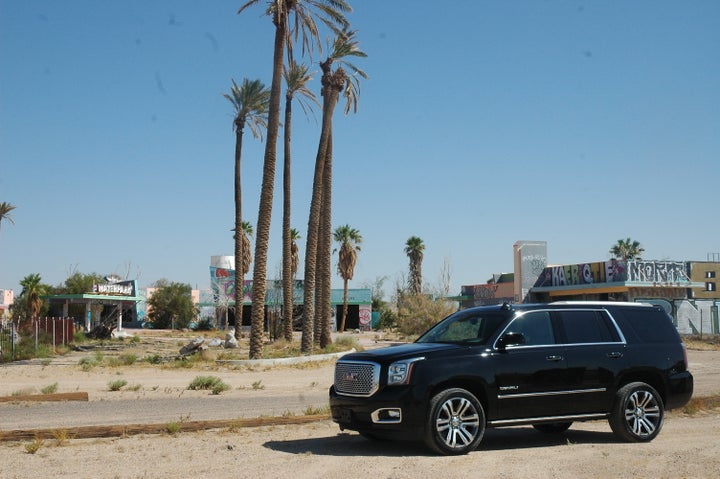
It’s worth noting that walking around Lake Dolores comes with warning and caution. The place has been deserted since 2004, so be on the lookout for vagrants. However, there’s usually no one there save fellow onlookers snapping photos.
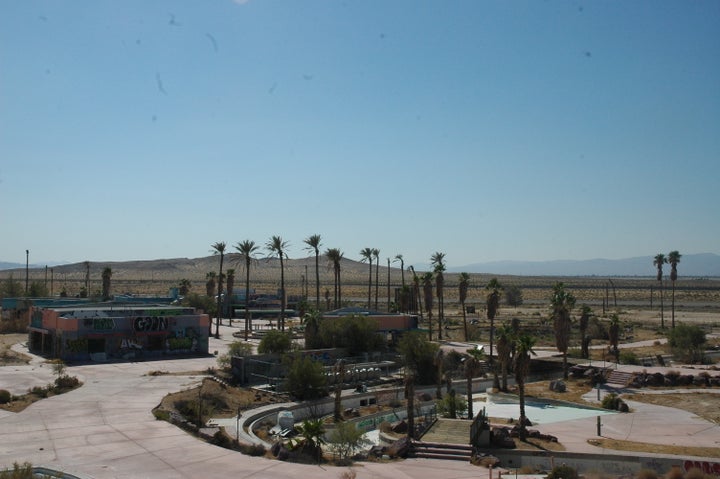
Hopping back into the car, the thermometer reads 107-degrees, requiring a serious chug from the five-liter water stash. With the air conditioning blasting, I take a dry napkin to my perspiring head and proceed to the next stop: Zzyzx.
Pronounced “zi-ziks,” Zzyzx is home to the Mojave National Preserve, 1.6-million acres of sand, dunes, mountains, and volcanic field.
From the highway, the natural landing point is the California State University Desert Studies Center in Soda Springs, but there’s no classroom or lectures on this journey. Instead, it’s back out into the heat, now clocking in at 109-degrees, to wander into the endless abyss, carefully keeping an eye out for snakes.
Even the serpents are hiding from the sun today, and only a jack rabbit makes a mad dash across the plain, into a grassy stretch. The vista is beautiful, an impressive nothingness that is infinitely everything at the same time. But the temperature wins this brief battle, and once again, it’s back into the Yukon for a respite from the heat.
It’s only another 10 miles or so to Baker, home of one of the desert’s most legendary destinations. Unlike Zzyzx, Baker’s treasure is completely man made, air conditioned, and serves one hell of a gyro. It’s time for lunch at the Mad Greek Cafe.
A desert staple for over 20 years, the Mad Greek is a quaint and cozy Mediterranean diner, 87 miles from the south end of the Las Vegas strip. Known for their gyros, the Mad Greek Cafe has an extensive menu of burgers, pastrami, and cheesesteaks mixed in with falafel, babaganoush, dolmadakia, and spanakopita. Even better than the food is the fact that the kitchen is open 24 hours, so whether en route to Vegas, or needing a pit stop after fleeing Sin City, the Mad Greek always provides a comforting taste and flavor.
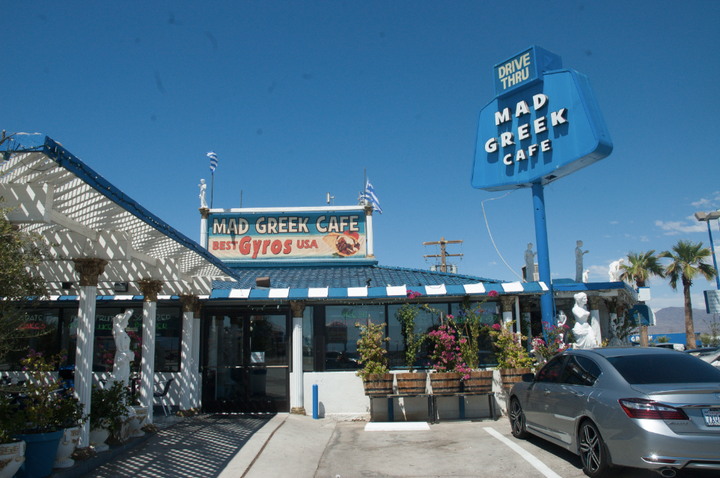
While munching on a steak gyro, I take a moment to call ahead and check into my hotel, three hours before Vegas officially opens its doors to a new round of guests. The diligence pays off, as my room will be ready when I arrive, allowing for a few extra hours by the pool. So, I take the french fries to go, and whip right back onto I-15 north, but not before Andre the Giant catches my eye.
One of the more famous and iconic street art symbols since 1989, the “Andre Has a Posse” campaign, created by Shepard Fairey, has popped up on empty walls worldwide. Today, the legendary professional wrestler appears on a mural in Baker, California, emblazoned on the side of an abandoned gas station. Fitting, considering the theme of the road trip.
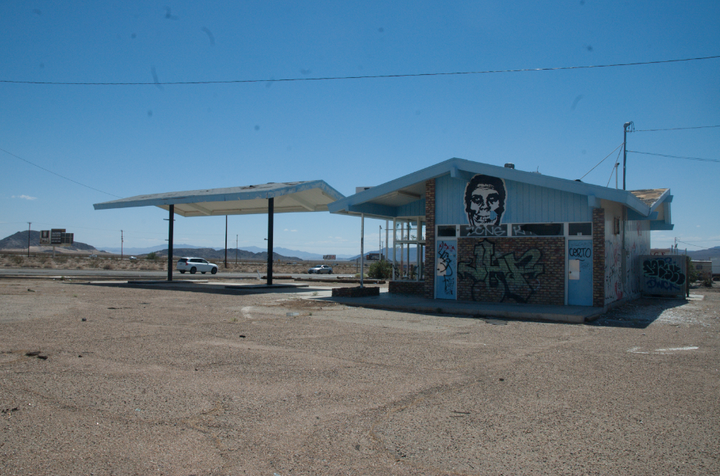
After the Baker stop, it’s pretty much a straight shot to Vegas, although who’s in a rush.
With the thermostat now reading 117-degrees, the final stretch flies by, starting with the Ivanpah Solar Power Facility -- the world’s largest solar power plant -- followed by the Nevada State Line, Primm, a gambling lite town, given a mainstream boost during season three of Showtime’s “Ray Donovan” series, and the Seven Magic Mountains, an open-air, public exhibition by Swiss artist Ugo Rondinone, just 22 miles south of Vegas.
There are certainly easier ways to travel, but few are more interesting than an expedition by car, and a voyage through the abandoned relics of the Mojave desert. On this particular day, Las Vegas merely happens to be the destination, but it’s the journey that provides the real travel adventure.
